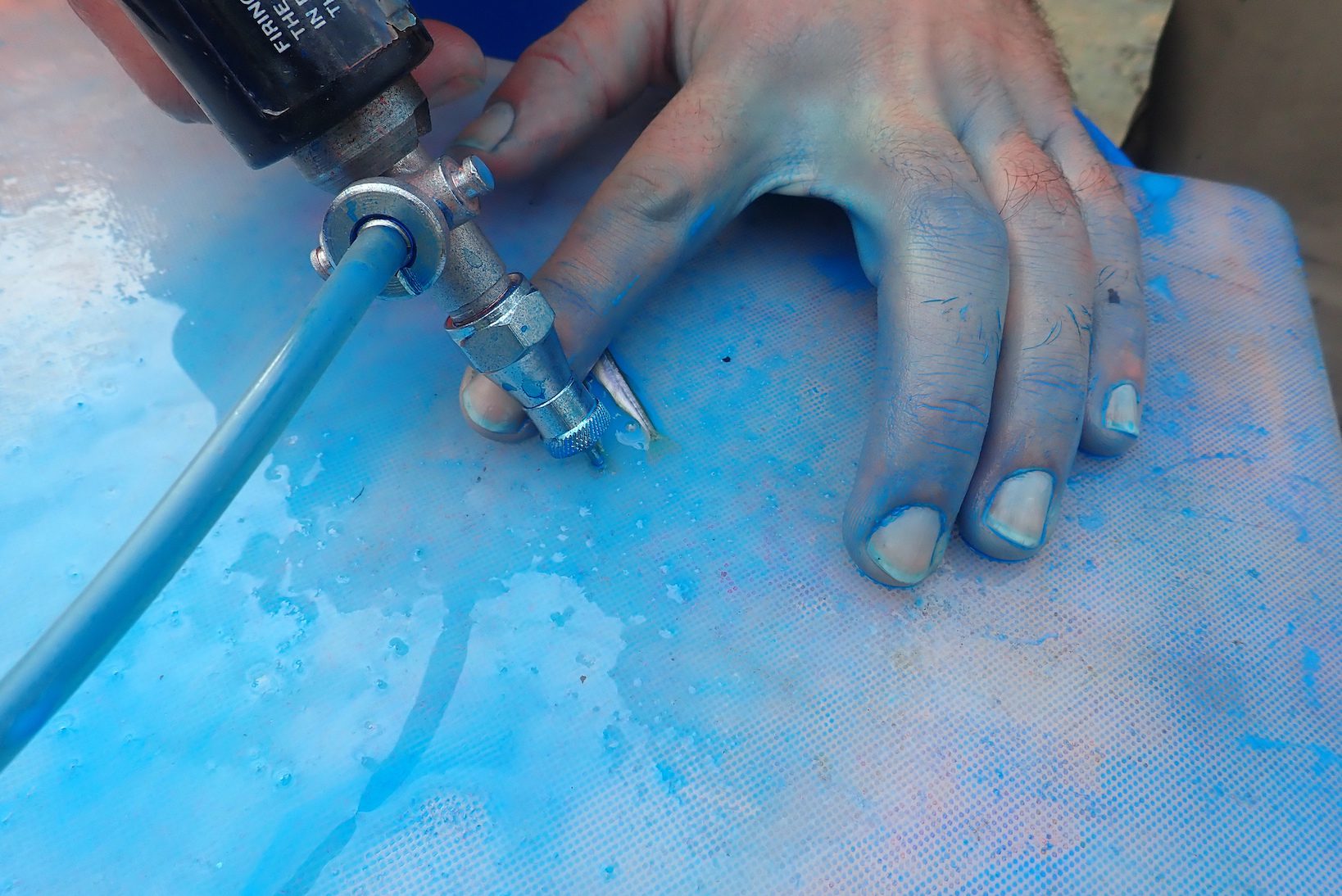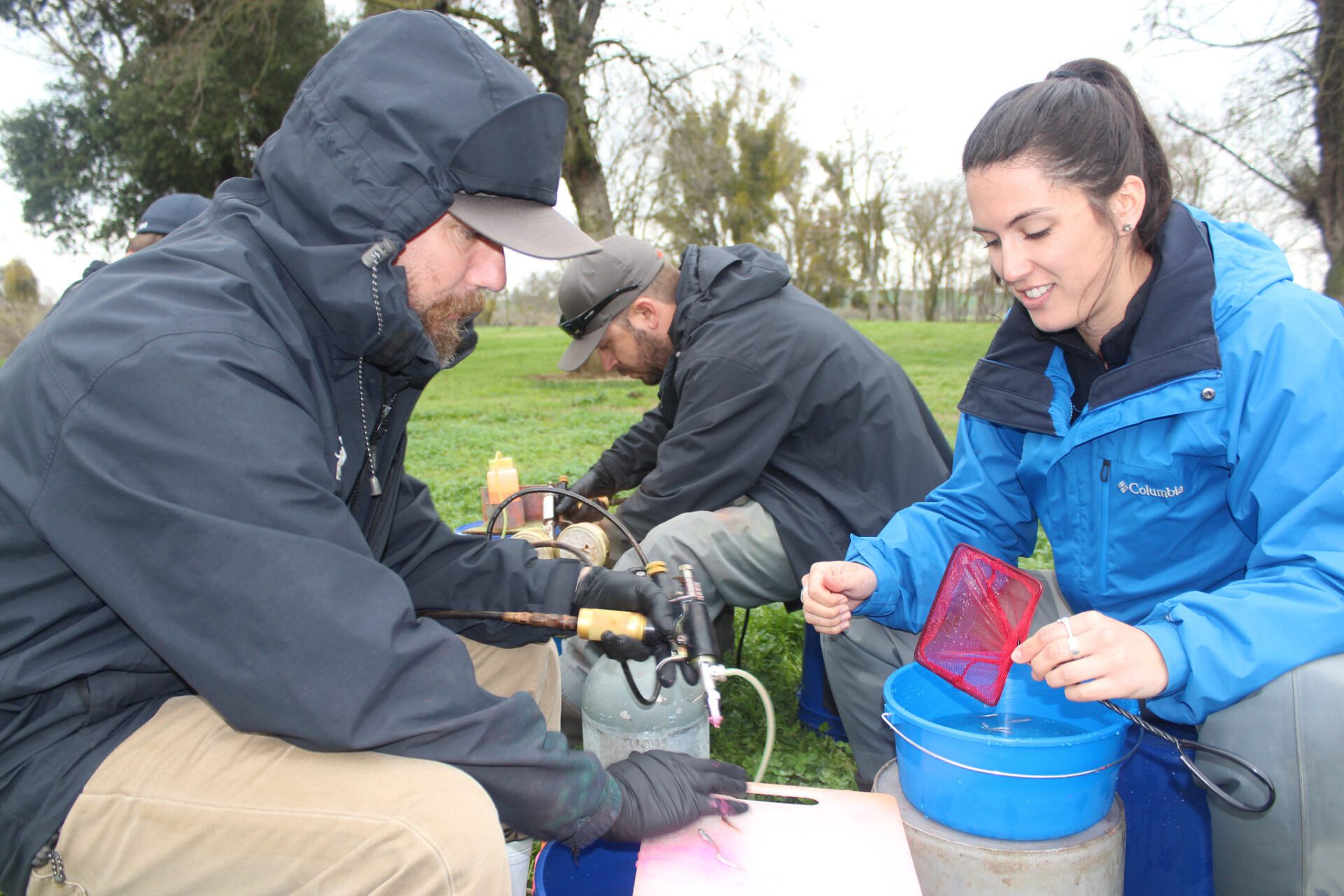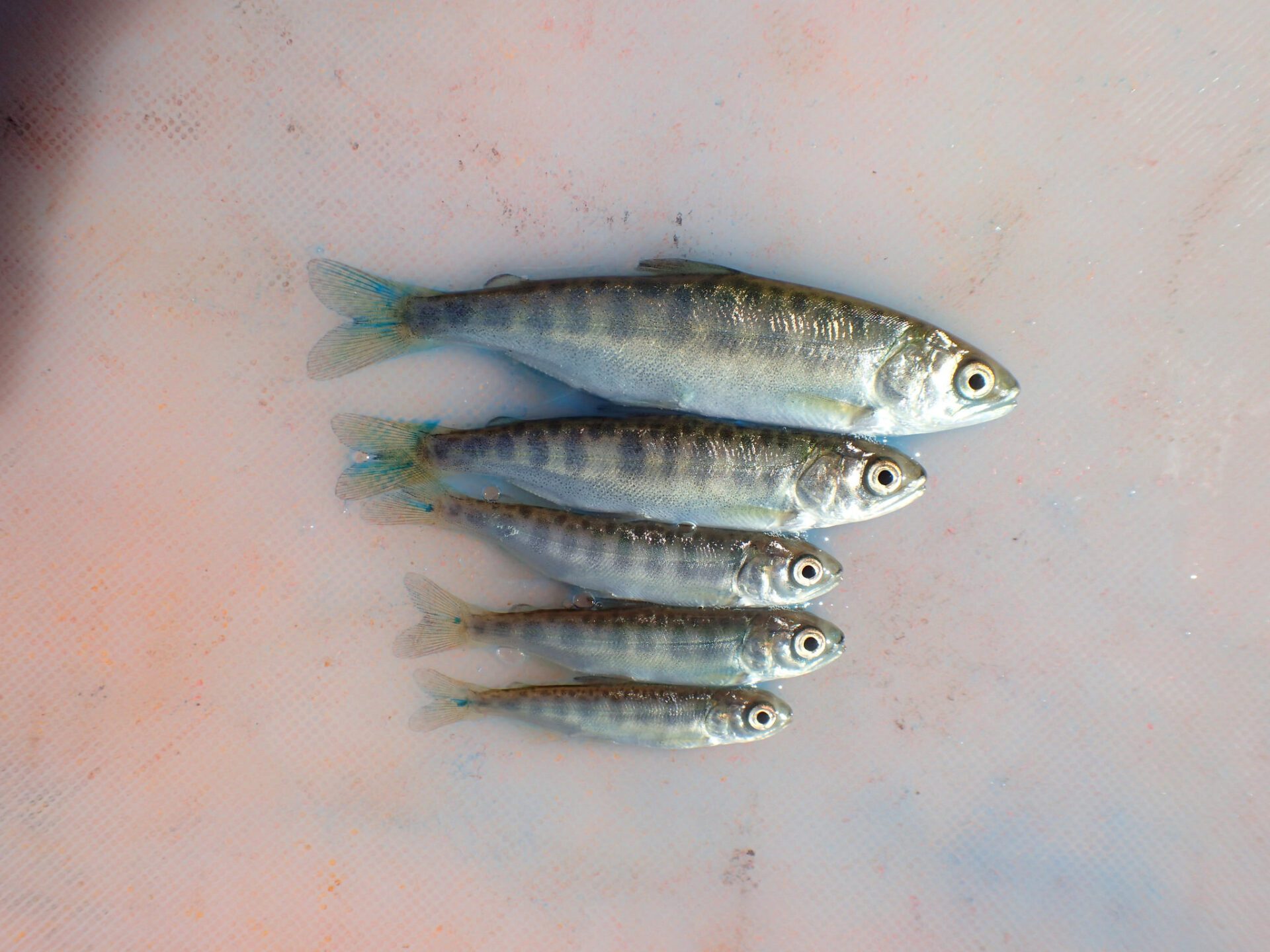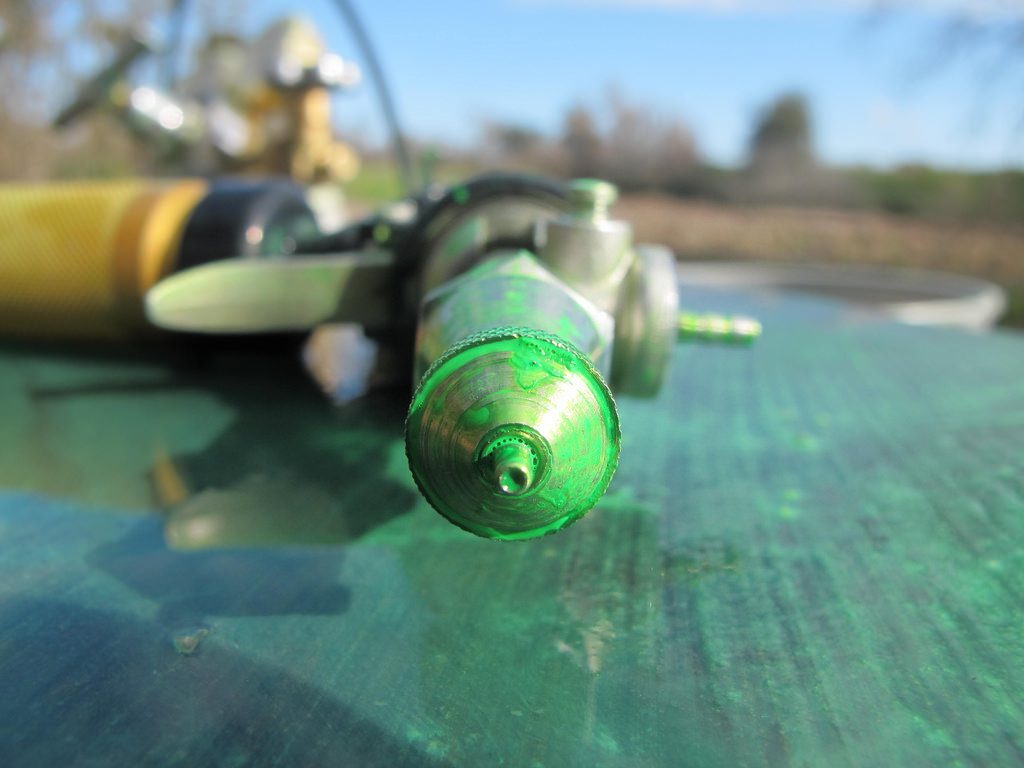Friday March 10, 2023

In today’s Flashback Friday, learn about our juvenile Chinook salmon marking technique to help us track our trap efficiency.
Winter is shifting into spring, and with the changing of the seasons comes the outmigration of Chinook salmon juveniles. That means it is all hands on deck for FISHBIO’s marking season. We mark salmon to test the efficiency of the rotary screw traps we use to monitor juvenile salmon migration. A specific number of Chinook salmon are marked with a brightly colored dye and then be released upstream from our trap. As the current pushes the salmon back down towards the trap, some will be caught and some will sail past it, continuing on their trip to the ocean with a free temporary tattoo. The amount of marked fish that we recapture, called the trap’s efficiency, will help us estimate the size of the juvenile salmon population in the Stanislaus, Tuolumne, and other local rivers.

To administer our marks, we use repurposed med-e-jet and Dermo-jet pneumatic injectors (which are typically used to inject medication into people) to insert bright dye into the tails of juvenile Chinook salmon. We first collect salmon to mark from our rotary screw traps and take them to shore, where we prepare the marking injectors. The injector setup consists of a dye bottle filled with a specific pigment chosen for that marking day, a pressurized air canister set to an appropriate pressure based on the size of the fish (higher pressure for larger fish and lower pressure for smaller fish), a marking board, and copious amounts of buckets. As soon as the equipment is ready, we sedate the fish using Alka-Seltzer tablets to saturate a small bucket of water with carbon dioxide. This makes the fish easier to handle and reduces stress on both the fish and the technician.

The two technicians marking the fish then get as comfortable as possible because the marking process can take a while. One begins counting fish into the Alka-Seltzer-infused water 25 at a time. This helps us keep track of how many fish we have processed and minimizes the time fish are sitting in the anesthetic. As soon as we see the fish lose equilibrium (when they fall on their sides and stop swimming), one technician will remove several fish from the solution and place them on the marking board in front of the marking technician. To make the process quicker, the marking technician will arrange the fish in a line facing the same direction. Holding a fish in place with one hand and positioning the marking gun with the other, the technician pulls the trigger to activate the piston that delivers the dye into the caudal fin.

After all the fish on the board are marked assembly-line style, we use a small squirt bottle to clean off the extra dye and examine the marked fins. We turn up the pressure on the gun if the marks did not stick or are too light, and turn down the pressure if the tails are split. The freshly marked fish are then placed in a bucket to recover, and after marking 100-200 fish, this recovery bucket is emptied into an insulated container in the back of our truck to await transport to the release site. These steps are repeated until we reach the requisite number of fish that need to be marked that day, which can be 1,000 or more for a single river.

After the marking is done, all the equipment must be cleaned of excess dye. If not cared for properly, the tip of the marking gun can easily become clogged and unusable. The tip is removed and disassembled into many small parts and left to soak in a cleaning solution. All parts of the tip are scrubbed gently with a small brush to remove any dye that has dried. Once brushed clean, the tip is reassembled and put back into the marking gun. The dye bottle is replaced with a clean water bottle and is fired several times until the spray coming out of the tip is clean and clear. Your marking day is a success if your equipment is clean and the technicians are stained a bright fluorescent hue.
